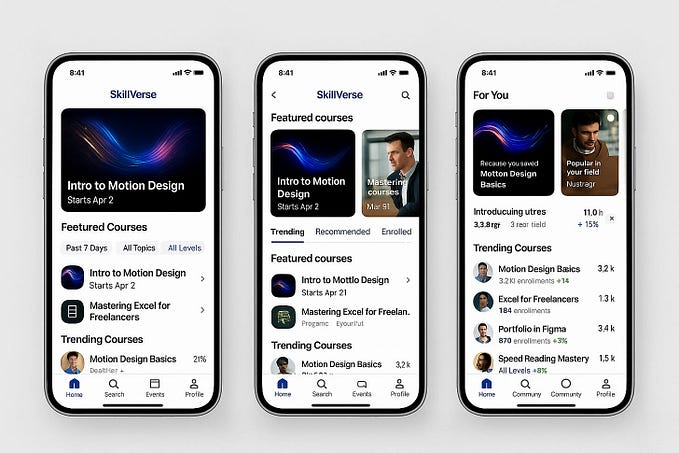The 5 Stages of Product Prototyping
The Path from PoC to MVP to Alpha to Beta to Release
“Ideas are shit, execution is the game.” — Gary Vaynerchuk, CEO of VaynerMedia
Google is a company founded on and devoted to the spirit of innovation. The company’s one-of-a-kind research lab, Google X, funds wild ideas like the driverless car and Google Glass. Innovation is at the core of the spirit that makes Google so successful.
But Google can afford to work on wild ideas ad infinitum because the company’s search-ad revenue is enormous and subsidizes everything else. Bloomberg reported that, in 2016, Google’s ad business made up 89 percent of Alphabet’s revenue, or $76.1 billion.
Unless you’re Google, you probably don’t have such deep pockets to endlessly pursue ideas that may end up going nowhere (like, ahem, Google Glass). If that’s the case, an iterative build process isn’t just a conceptual philosophy; it’s a financial mandate.
If your goal is to build a digital product, stepping through the stages of prototyping with steadfast allegiance to iteration will get you there in true tortoise style — slow and steady, but ultimately faster than the impatient hare.
In this post, I’d like to introduce a framework for building digital products in an iterative way. It starts by recognizing the five stages of product prototyping, but as you read, keep in mind that in an iterative process, you may repeat these stages multiple times and sometimes even take a step backward.
Stage 1: Proof of Concept
The initial proof of concept (POC) can be hard to wrap one’s mind around. But an initial POC can be as simple as a sketch on a napkin during a casual lunch conversation. Your goal should be to test the very idea of your product in the shortest amount of time possible — even if that means just having a conversation about it with someone you trust.
Your first proof of concept won’t be your last. You might even end up creating several proofs of concept in tandem across disciplines, using them to test technology platforms, for instance.
Stage 2: Minimum Viable Product
“It’s better to build something that a small number of users love, than a large number of users like.” — Sam Altman, President of Y Combinator
During the Minimum Viable Product (MVP) stage, you can fake some of the functionality. If you’re building an app, it doesn’t need to be fully functioning and correctly coded. Your goal is really just to test your idea at a fraction of the cost it will take to build out the entire product.
The minimum viable product (MVP) is where the rubber meets the road in terms of user experience. We always recommend that when building out the first rough version of your product, you make sure it does one thing (and, for the most part, only one thing) really well. It should never scrimp on user experience.
Stage 3: Alpha Release
The purpose of an alpha product is to define your launch feature set. Think of it as an advanced variation on your MVP, but testable.
When you enter into the testing stage of designing your product, start with a small group of users — ten or fewer. This is far from a public release because your product is not yet stable. Limit it to a trusted inner circle, but make sure it’s an active group that will be willing to provide you with feedback quickly.
Stage 4: Beta Release
At beta, you’re squashing bugs and preparing your launch-ready app. It’s time to lock your features down and stop adding new things. Here, you’re refining.
It’s okay to invite the public, but with a strong caveat that the release is not yet ready for primetime use. Some users find beta products utterly frustrating, so be cautious on outright public testing. We recommend making it invite or sign-up only. This gives you two major benefits:
- You can clearly define that your product is in beta state with a “proceed at your own risk” warning
- You then collect information so you know who is using your beta product, and you can implement easy feedback mechanisms.
With that feedback, you can refine and hone your product to get it ready for release.
Stage 5: Launch-Ready Release Candidate
Finally, the day has arrived; your product is ready for rollout. You might not have every feature you’ve ever dreamed of integrated and ready to go. But your product should now solve a specific problem for the user, and be fully functioning and bug-free. (Note: it’s of course impossible to squash all bugs, but during the beta phase you did your best to eradicate them.) It’s stable, and it’s time.
To be clear, this is not the end of the line as far as iteration is concerned. There may be many more versions of your product to come, and you should never stop questioning, testing, and refining.
Learning through doing is the best way to get good at something. It illuminates all the intricacies and chaos of bringing a new idea to life. In our books, we emphasize doing / building / creating / executing at every opportunity — as opposed to planning / meeting / strategizing ad nauseam. Getting from POC to MVP will help you accelerate your speed to solution.
In our next post, I’ll cover the development methodology that helps you cycle through these stages of product prototyping in an iterative way that results in the best possible (in other words, most user-friendly) product.
Want to keep going? Read our book Got Ideas? How to Turn Your Ideas into Products People Want to Use, which takes novice product-makers through the journey of creating great, user-friendly digital products from the thin air of their imaginations. Available in hardcover, paperback, ebook, and audiobook, it’s a hands-on, practical manual for aspiring entrepreneurs and intrapreneurs.









